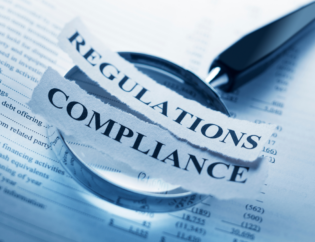
Digital assets have become increasingly popular in recent years, so much so that governments and central banks can no longer ignore them. However, the regulatory landscape for digital assets is complex and evolving, with different countries taking different approaches to regulating this new asset class. In this article, we will provide a comparative analysis of the regulatory frameworks for digital assets in major markets around the world.
United States
In the United States, digital assets are subject to a complex web of regulations from multiple agencies. The Securities and Exchange Commission (SEC) has taken the position that many digital assets, including cryptocurrencies, are securities and subject to federal securities laws. The Commodity Futures Trading Commission (CFTC) has also asserted its jurisdiction over digital assets that qualify as commodities under the Commodity Exchange Act.
In addition, the Internal Revenue Service (IRS) has issued guidance on the tax treatment of digital assets, treating them as property for tax purposes. This means that gains on digital assets are subject to capital gains tax, and losses on digital assets can be used to offset capital gains.
Europe
The regulatory landscape for digital assets in Europe is fragmented, with different countries taking different approaches to regulating this new asset class. Some countries, such as Malta, have sought to position themselves as hubs for digital asset companies by enacting regulatory frameworks that provide clarity and certainty for businesses operating in the sector. Other countries, such as Germany, have taken a more cautious approach, subjecting digital assets to the same regulations as traditional financial instruments.
The European Union (EU) has also taken steps to regulate digital assets, with the introduction of the Markets in Crypto-Assets (MiCA) regulation. This regulation seeks to provide a comprehensive regulatory framework for digital assets in the EU, including rules around custody, trading, and disclosure.
Asia
Asia is home to some of the most active digital asset markets in the world, with countries such as Japan, South Korea, and Singapore taking a proactive approach to regulating this new asset class. Japan was one of the first countries to regulate digital assets, enacting a law in 2017 that recognized digital assets as a legal method of payment.
South Korea has also taken steps to regulate digital assets, enacting a law in 2020 that requires digital asset businesses to register with the Financial Services Commission (FSC) and comply with AML and KYC regulations.
Singapore has taken a more permissive approach to digital asset regulations, seeking to position itself as a hub for digital asset businesses. The Monetary Authority of Singapore (MAS) has issued guidelines for digital asset businesses, outlining the requirements for operating in the sector.
China
China has taken a more restrictive approach to digital asset regulations, with a ban on initial coin offerings (ICOs) and the trading of digital assets on domestic exchanges. However, the government has not banned individuals from holding digital assets, and it has continued to explore the potential of blockchain technology for use in various industries.
The Future of Digital Asset Regulations
The regulatory landscape for digital assets is complex and rapidly evolving, with different countries taking different approaches to regulating this new asset class. However, there are several trends that are emerging in digital asset regulations around the world.
One of the most significant trends is the increasing recognition of digital assets as a legitimate asset class. This recognition is leading to the development of regulatory frameworks that provide clarity and certainty for businesses operating in the sector.
Another trend is the focus on anti-money laundering (AML) and know-your-customer (KYC) regulations. Governments around the world are increasingly concerned about the use of digital assets for illicit purposes, such as money laundering and terrorism financing. As a result, they are enacting regulations that require digital asset businesses to implement robust AML and KYC procedures.
In conclusion, the regulatory landscape for digital assets varies significantly across different countries, with some taking a more permissive approach, while others are more restrictive. The increasing recognition of digital assets as a legitimate asset class is leading to the development of regulatory frameworks that provide clarity and certainty for businesses operating in the sector.
However, the complex and evolving nature of digital asset regulations presents challenges for businesses and regulators alike. As the digital asset market continues to grow, it will be important for regulators to strike a balance between promoting innovation and protecting consumers and the integrity of the financial system.








